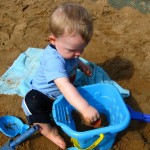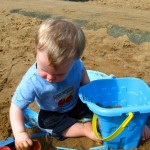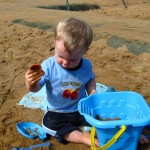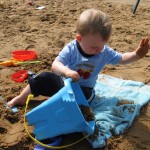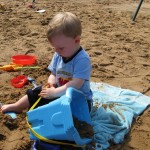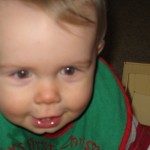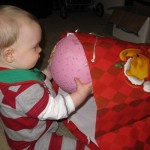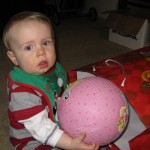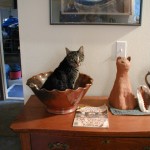In The Not So Big House and Creating The Not So Big House books, Sarah Susanka (amazon link) advocates leaving the vaulted-ceiling mansions that have become the hallmark of house design and returning to designing houses that are specifically tailored to the very personal and unique needs of the homeowner who will live in the architect-designed home. Quality replaces quantity; intimate detailing replaces square footage.
Recently, as my husband and I hired an architect and began the schematic design process for our future retirement home, I found myself in the midst of an “archetypal” battle. I see it as defined by the clash of “masculine” vs. “feminine,” “Thinking vs. Feeling” modes of being, based upon psychiatrist C.G. Jung’s descriptions and psychological tests such as the Myers-Briggs Type Indicator and Keirsey Temperament Sorter (see “Jung, MBTI, and Experiential Theory” for explanations and Creative Edge Focusing Personality Tests for links for some free versions of these tests).
My husband and I had agreed, after seeing the book New Minimalist Houses (this is Amazon link for great bargain price, $50 reduced to $15!), that Minimalist could describe the kind of house we wanted — lots of glass/concrete/steel, as little as possible between us and the surrounding nature of our 20-acre forest on a ridge. But, it turned out, this was about all we agreed on!
Mind you, both the architect and my husband are feminist, egalitarian, good listeners. And I am a Ph.D. scholar.Yet, there was something about this opportunity to design from a blank slate that engaged all of us in visions to which we desperately wanted to cling, making it almost impossible to “hear from” the opposing view .
The architect followed a method he is known for, going to the home site, hiking for hours, sitting for hours if needed, until he came up with an inspiration for the design of the house, knowing some about us but a lot about the site and location. He ended up discovering a totally different and much better site location for the house, in our twenty acres of forest, and offering creative and striking designs for a one- and two-story version of our house.
The architect’s proposed one-story design was much like The Air House in the Minimalist book — a long rectangle of glass, spread along the ridge, with views and light from North and South. My husband fell in love with it, as it let light enter every room from both north and south.
Okay, I thought, I can live with that, but I want the Guest Area/Project Room/Full Bath closer to the rest of the house, not across a breezeway, I said. I said the Garage and Shop can go across the breezeway. I knew that, at a distance, I would not use the space for Projects, and it would be empty, wasted square footage except when Guests came.
I also wanted the Full Bath to be shared with the two Studies at that end of the house, so that the three spaces, Guest/Project, Study, Study could function as bedrooms, if our future aging needs or future buyers needed such a constellation. I thought my husband would be happy with the striking southern views and light he could have from his shop. And he was okay with this compromise.
And here the epic struggle began. The architect would come back with his original design, saying “the house” needs the Guest/Project/Bath across the courtyard, or “there needs to be a living space across the courtyard to balance the design.” I would counter with “I” need them on this side of the courtyard, so they can function together as three bedrooms, if needed.
And yet his design would come back again, modified some but still with Project/Guest/Bath at a distance from the rest of the house (given geographical distance, we were communicating by email, not ideal!). Finally I said, “You keep trying to ISOLATE this space, and I am trying to CONNECT it.”
I also mentioned casually to my husband that I would like a Front Porch, where I could sit and watch nature go by, and where visitors could find a sheltered entry.
Reading Susanka, I also found some confirmation for my wish for some bay windows to serve as alcoves at the edges of the minimalist open floor plan. I was afraid that flat, rectangular expanses of glass wall would not “draw us in” to the view, would seem cold and distant.
And my husband, usually very mild-mannered, freaked out: “No! No bumps! The house is to be sleek, sleek, not full of bumps and lumps.”
It seemed to me that each of them, husband and architect, were quite comfortable with accommodating the needs of the residents to the needs of the design, the conceptual needs of “the house.” They could look at a floor plan and fall in love with it.
I however, could not imagine living, feeling alive, in a house that was like a shell laid over and against my actual living, constraining me into a particular shape.
Through an epic struggle coming close to divorce and firing of the architect, we have come to an understanding, a compromise which I call “cozy minimalism,” incorporating Susanka’s sensitivity to the human longing for enclosed, sheltered “alcoves” at the edges of open floor plan spaces with the flying visions, open spaces, and angles of minimalism.
We are entering a period of design where the architect will mainly LISTEN as my husband and I articulate our intuitive sense of our own wants and needs, and then come up with creative, unique ideas and methods for incorporating, aned compromising, those needs.
Out of this new dialogue, already a possible “roof garden” and “sunroom/breakfast nook” alcove have arisen to soften The Air House into an individualized home, yet keep the soaring aspects of the architect’s inspiration.
For more on The Not So Big concept, designing from “the inside out,” from careful attention to the unique needs of the homeowner, see the Susanka books cited above.
For more on learning to Listen To Yourself through Intuitive Focusing and Listen to Another through Focused Listening, see the many resources and free downloads below.
CREATIVE EDGE FOCUSING(tm): SELF-HELP SKILLS FOR HOME AND WORK
Free Downloads:
Complete Focusing Instructions Manual (17 pages)
“Ajas” Instantaneos Mini-Manual
Creative Edge Focusing (www.cefocusing.com ) teaches two basic self-help skills, Intuitive Focusing and Focused Listening, which can be applied at home and at work through The Creative Edge Focusing Pyramid.
Based upon Gendlin’s Experiential Focusing (www.focusing.org ) and Rogers’ Empathic Listening, our website is packed with Free Resources and instructions in these basic self-help skills. Learn how to build Support Groups, Conscious Relationships, and Creative Edge Organizations based upon these basic skills of emotional intelligence.
You can try out “Focusing: Find Out What Is Bothering You.”
Click here to subscribe to Creative Edge Focusing(TM)’s Instant “Ahah!” e-newsletter and get the latest exercises first!!!
Click here for a free Intuitive Focusing Mini-Course
Click here for a free Focused Listening Mini-Course
See Core Concept: Conflict Resolution to find a complete mini-course on Interpersonal Focusing and Conflict Resolution, including Rosenberg’s Non-Violent Communication, Blanchard’s “One Minute Apology,” Patricia Evan’s books on Verbally Abuse and Controlling Relationships, McMahon’s Beyond The Myth Of Dominance, and much more.
See Core Concept: Intimate Relationship to find a complete mini-course on increasing intimacy and sexuality, including the “Sharing Your Day” exercise, Listening/Focusing Partnerships for The Way of Relationship, untangling and equalizing desire, tantric sexuality, and much more.
Download complete Instant “Ahah!” Mini-Manual, in English and Spanish, from CEF Website, or download from links at top of this blog.
Find links to free articles, personality tests, multi-media Self-Help training, Classes and workshops
Dr. Kathy McGuire, Director
Creative Edge Focusing (TM)
www.cefocusing.com

